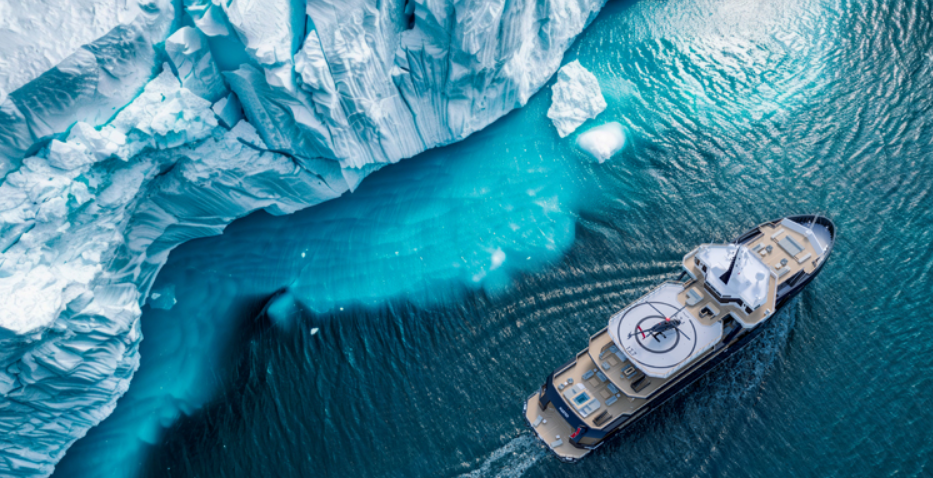 Significant work has gone on to transform an offshore vessel into a luxurious globetrotting superyacht with ocean conservation at heart. There’s still nearly two years’ worth of work left, too. With the code-named yacht Project Master having just entered phase two of her conversion,
Significant work has gone on to transform an offshore vessel into a luxurious globetrotting superyacht with ocean conservation at heart. There’s still nearly two years’ worth of work left, too. With the code-named yacht Project Master having just entered phase two of her conversion,
the milestones behind her are as significant as the ones ahead.
A superyacht conversion marrying purpose and adventure, Project Master has quite the history. In fact, the initial conversation between the owner and Icon Yachts is a story in itself. Instead of already having a vessel in hand, the owner solicited Icon’s opinion for a good conversion candidate. Besides wanting to cruise the world, he wanted his family, plus charter guests, to enjoy immersive experiences. These especially include aiding ocean scientists and promoting conservation. Adequate work spaces besides leisure areas were therefore needed.
The shipyard identified the 216-foot (66-meter) Ocean Ness as a worthy contender. She launched from the well-regarded Kleven yard in Norway in 2001 as an Emergency Response and Rescue Vessel. Briefly, Ocean Ness handled operations ranging from rescuing personnel from offshore platforms to responding to fires and environmental emergencies. With a beam of 49 feet (15 meters), the ship was ruggedly engineered, too, handily taking on big seas.
Considerable time went in to redesigning her before any metal was cut. Firstly, Icon Yachts, the owner’s team, and the design teams determined a 13-foot (4-meter) extension and a new superstructure were warranted. The completely new superstructure contains the aptly named Accommodations Decks. Specifically, five guest suites will sit on the main deck. The owner’s suite, meanwhile, will sit three decks higher. On a related note, the extension and reconfigured superstructure increase volume by 1,000 gross tons. Overall, the converted yacht Project Master will have a more-than-healthy 2,800-gross-ton volume.
Besides completing the extension and superstructure, Icon Yachts has installed the hybrid-propulsion system. Notably, this 230-footer (70-meter) will rely on twin electric Voith Schneider Propellers (eVSPs), which unite propulsion and maneuvering into one unit. Long proven in the commercial sector, the blade-like eVSPs (above) respond nearly instantaneously to the helm. Additionally, they have low fuel consumption, plus can operate silently in electric mode, benefitting guests and marine life. Dynamic positioning is yet another advantage.
Currently in Icon Yachts’ dry dock, the yacht Project Master will see several key areas begin to take shape during the next phases. For instance, she’ll have a science lab and teaching room. These will benefit the owner’s family as much as environmentally minded and/or adventurous charter guests. The travel company Cookson Adventures and the non-profit International SeaKeepers Society have been working with Icon Yachts since the beginning of the conversion for these reasons. Should scaling up be necessary for in-depth scientific endeavors, information is already on hand.
Come 2027, Project Master will accommodate a party of 12 plus have 18 crew cabins. Guests will be able to visit Mediterranean shores as easily as high- or low-latitude destinations. Ruggedly capable tenders will support conservation missions and, equally importantly, lead to countless once-in-a-lifetime memories.
Diane M. Byrne
Megayacht News
